Are there experiences with the compatibility of Samsung's SOH Series as replace for Sony's KSS-Series like KSS-213C or KSS-210A?
The reliability from Samsung used laser diode in their laser units is much more better than Sony's SLD-104U - therefore the question.
here some URLs - Samsung Optical Pick up SOH Series. Overviews:
http://www.vcdpickup.com/SAMSUNG.htm
EKT Electronics
Index of /CD
JusTone Lasereinheiten. SOH-A2U / SOHA2U SAMSUNG. Lasereinheit, Laserpickup, Laserunit, Pickup, Laser, Laserkopf, Laufwerk, Mechanism
The reliability from Samsung used laser diode in their laser units is much more better than Sony's SLD-104U - therefore the question.
here some URLs - Samsung Optical Pick up SOH Series. Overviews:
http://www.vcdpickup.com/SAMSUNG.htm
EKT Electronics
Index of /CD
JusTone Lasereinheiten. SOH-A2U / SOHA2U SAMSUNG. Lasereinheit, Laserpickup, Laserunit, Pickup, Laser, Laserkopf, Laufwerk, Mechanism
Attachments
-
Samsung SOH-OT3.pdf69.7 KB · Views: 471
-
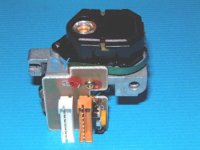 B_Sohot3.jpg27.9 KB · Views: 238
B_Sohot3.jpg27.9 KB · Views: 238 -
 B_Soh-ad3.jpg26.3 KB · Views: 237
B_Soh-ad3.jpg26.3 KB · Views: 237 -
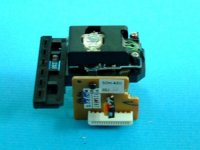 Samsung SOH-A2.JPG24 KB · Views: 478
Samsung SOH-A2.JPG24 KB · Views: 478 -
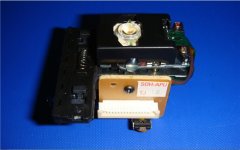 Samsung SOH-APU.jpg49.1 KB · Views: 477
Samsung SOH-APU.jpg49.1 KB · Views: 477 -
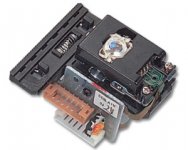 Samsung SOH-AIU.jpg22 KB · Views: 507
Samsung SOH-AIU.jpg22 KB · Views: 507 -
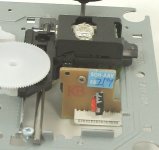 SAMSUNG SOH-AAV with mechanism CBM B35.jpg127.5 KB · Views: 534
SAMSUNG SOH-AAV with mechanism CBM B35.jpg127.5 KB · Views: 534 -
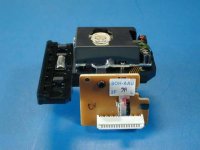 SAMSUNG -SOH-AAU.jpg27 KB · Views: 543
SAMSUNG -SOH-AAU.jpg27 KB · Views: 543
The Berendsen thread confirms swap-ability between one of those & the similar Sony. Four of those appear to be KSS-213 clones, one a KSS150/210 clone, and the last one a KSS152/212 clone.
Where do you get your reliability stats? I have worked on hundreds of players since 1983, and I have seen very few bad Sony's of the above types. ONLY time I can recall replacing more than one or two 213's is in some of the Chinese players where they stupidly use the Sony laser with the "auto-calibrate" Philips servo chip that is barely compatible with it, and it's always just a tiny drift in the pickup that would never disturb a player with the normal Sony chip. On the other hand, I have seen quite a number of Samsung lasers go flat out bad.
Where do you get your reliability stats? I have worked on hundreds of players since 1983, and I have seen very few bad Sony's of the above types. ONLY time I can recall replacing more than one or two 213's is in some of the Chinese players where they stupidly use the Sony laser with the "auto-calibrate" Philips servo chip that is barely compatible with it, and it's always just a tiny drift in the pickup that would never disturb a player with the normal Sony chip. On the other hand, I have seen quite a number of Samsung lasers go flat out bad.
I discover an adjustment methody by Harman Kardon's CD player model "HD710" (HD-710) for the laser power, inside of the APC section, that I have never seen before - have a look to the attached PDF files.
Why this kind of adjustment was only use by optical pick up's from Samsung?
Here is a datasheet of the associated mechanism:
http://www.haluyatech.com/down/sgnec/CMS-B33SG6(20030210).pdf
OTOH it is possible, that this laser units are at whole relatively small spread as supplier component in opposite to Sony's KSS-series.
However - most of the laser units from the other brands works still fine; I renewed the laser units at those days only on suspicion - but the reason for the error was another part.
Thus I can say nevertheless, that other laser-units than Sony work much more reliable concerning lifetime. Keep in mind, there are two major shortcomings by SONY KSS lasers:
- the laser diode itself (type SLD-104U)
- the suspension of the laser lens (plastic instead of spring wire like used by other manufacturers like SANYO)
Why this kind of adjustment was only use by optical pick up's from Samsung?
Here is a datasheet of the associated mechanism:
http://www.haluyatech.com/down/sgnec/CMS-B33SG6(20030210).pdf
I have a great amount of faulty Laser's from the KSS-Series and only very few from other brands like e. g. Pioneer, Samsung, Olympus, Sanyo and JVC.The Berendsen thread confirms swap-ability between one of those & the similar Sony. Four of those appear to be KSS-213 clones, one a KSS150/210 clone, and the last one a KSS152/212 clone.
Where do you get your reliability stats? I have worked on hundreds of players since 1983, and I have seen very few bad Sony's of the above types. ONLY time I can recall replacing more than one or two 213's is in some of the Chinese players where they stupidly use the Sony laser with the "auto-calibrate" Philips servo chip that is barely compatible with it, and it's always just a tiny drift in the pickup that would never disturb a player with the normal Sony chip. On the other hand, I have seen quite a number of Samsung lasers go flat out bad.
OTOH it is possible, that this laser units are at whole relatively small spread as supplier component in opposite to Sony's KSS-series.
However - most of the laser units from the other brands works still fine; I renewed the laser units at those days only on suspicion - but the reason for the error was another part.
Thus I can say nevertheless, that other laser-units than Sony work much more reliable concerning lifetime. Keep in mind, there are two major shortcomings by SONY KSS lasers:
- the laser diode itself (type SLD-104U)
- the suspension of the laser lens (plastic instead of spring wire like used by other manufacturers like SANYO)
Attachments
Last edited:
That's the old laser current measurement method. Not at all accurate, but this measurement + optical power measurement can tell you a lot about the age/health of the laser diode. Some old players, like the original Nakamichi OMS-5 & 7, had this current adj method in the manual, but you have to use both methods to be sure the laser is ok, as a)the NEC laser used had aging characteristics that meant you rarely got full proper 0.24mW output with specified current, and b)if you only adjust by optical output, you could be too high on current, which upsets the servo system & causes trouble.
So, I guess you don't count lenses falling out as "pick-up failure" if Pioneer lasers are on your reliable list.;-) That's an easy fix, of course.
So, I guess you don't count lenses falling out as "pick-up failure" if Pioneer lasers are on your reliable list.;-) That's an easy fix, of course.
That's the old laser current measurement method. Not at all accurate, but this measurement + optical power measurement can tell you a lot about the age/health of the laser diode. Some old players, like the original Nakamichi OMS-5 & 7, had this current adj method in the manual, but you have to use both methods to be sure the laser is ok, as a)the NEC laser used had aging characteristics that meant you rarely got full proper 0.24mW output with specified current, and b)if you only adjust by optical output, you could be too high on current, which upsets the servo system & causes trouble.
So, I guess you don't count lenses falling out as "pick-up failure" if Pioneer lasers are on your reliable list.;-) That's an easy fix, of course.
Exactly. Therefore I like offers with defective Pioneer CD players (like PD4350 e. g.). They are cheap and easy to repair (laser diodes itself are not muddy resp. weak).
For my own method of fixing of the lens I do not like gluing technology (plastic lens !!!).
I work basicly with industrial plasticine or modelling clay.
My favorite material therefore is follow:
Karosseriedichtband von Teroson | Klebe- und Dichtstoffe | Reinigung und Pflege | Autobedarf | TE Taxiteile Berlin Mercedes Ersatzteile
http://www.mercateo.at/pdf/Reidl/62850.pdf
EAN: 4002872128963
Also very suitable for sealing of speaker chassis. Can be used over and over again even after disassembly.
Unfortunately I don't know the english colloquial term for the German keyword "Karosseriedichtband" ("Body sealing tape" from Google's language tools is wrong)
Last edited:
- Status
- Not open for further replies.